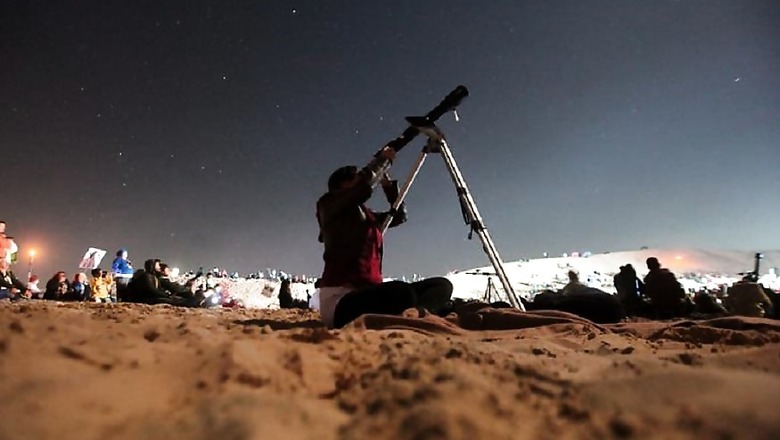
views
August 2017 is going to be a treat for sky-watchers. Throughout the month, promising views of various astronomical phenomenon, ranging right from a total solar eclipse to Saturn’s rings and meteor showers, can be seen from around the globe. Enthusiasts of out-worldly sights can observe these occurring on the respective dates using the right equipment. Here is a list of all the celestial events which are to take place in the month of August.
August 2: Saturn’s Rings
More than a month ago, Saturn crossed closest to Earth in its trajectory around the Sun. The ringed planet can still be prominently seen in the night sky. Saturn (and its majestic rings) can be observed as a bright yellowish star right next to the ‘more than half-lit’ moon. Saturn can be located to the south of the moon at the night sky between 2 am and 3 am across India. Viewing the planet through Binoculars or better yet, a Telescope will also reveal the renowned rings of Saturn and the gap between them, called the Cassini Division. Viewers will also be able to see some of the largest moons of the planet.
August 7: Partial Lunar Eclipse
Earth is poised to cross the orbits of the Sun and the Moon for a partial Lunar eclipse on August 7. The nearly two-hour event will start just prior to 11 pm in India and will end around 12:45 am on the night of August 8. Earth will cover only a part of the Moon at the peak of the eclipse, which is expected to occur around 11:50 pm in India.
August 12: Perseid Meteor Shower
Another celestial event to take place in this month, the Perseid Meteor shower sees the famous Perseid meteors shooting across the night sky every year around mid-July to August. This year, the meteor shower is expected to be at its peak on August 12, until the early morning hours of August 13. At its peak, viewers can see up to 100 shooting meteors in an hour. This year though, a nearly full moon may hinder the visibility of the meteors so it is advised to observe the celestial phenomenon from a location away from city lights.
August 16: Aldebaran
Aldebaran is an orange-coloured star in the zodiac constellation ‘Taurus’, located 65 light years away from the Earth. The star will be visible to the upper right of the moon on the night of August 16. The Aldebaran star holds mythological importance in various religions. Located in the Taurus constellation, it is considered to be the eye of Taurus – the Bull. The star is also famous as ‘Rohini Nakshatra’ as per Hindu mythology, known to be Moon’s favourite wife.
August 19: Venus
Earth’s Sister Planet – the Venus can be seen shining bright, next to the Earth’s moon on August 19. Starting after 3 am Saturday night, the planet will be in good visibility right on top of the moon until around 4 pm Saturday evening.
August 21: Total Solar Eclipse
Earth’s moon will completely block the entire circumference of the sun in this most awaited celestial phenomenon of the year. The Total Solar Eclipse, also termed as the Great American Eclipse will be observed coast to coast in the US on August 21, for the first time in 99 years. Unfortunately, the nearly three-hour celestial event will not be visible from India.
August 25 – Jupiter and Spica
The largest planet in the solar system will be fairly visible on Friday, August 25 right from around 9 am in the morning to 9 pm in the night. Jupiter can be located on the bottom right of the moon for a week straight. Accompanying it will be the brightest star in the ‘Virgo’ constellation, named Spica. The blue-coloured star will be visible further below Jupiter to the left of the moon in the night sky.
As the astronomical minds prepare for a month of sky-gazing, it is advisable to use special-purpose solar filters or eclipse glasses in order to observe the lunar and solar eclipses.




















Comments
0 comment